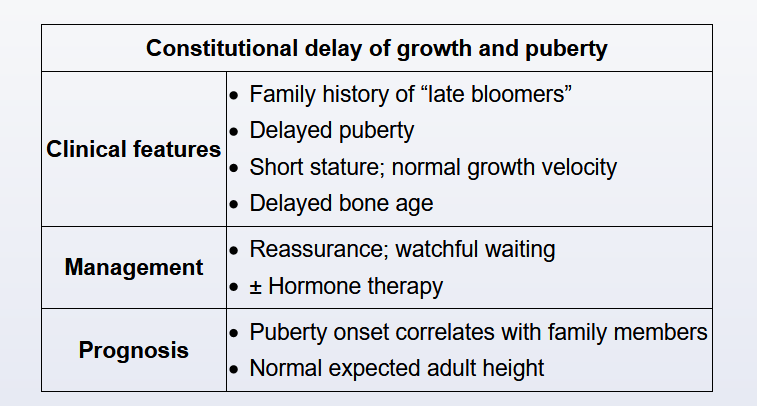delayed growth
Delayed Growth

Puberty is considered delayed if no secondary sexual characteristics (typically testicular enlargement [>4 mL] or breast development) are present by age 14 in boys or age 12 in girls. This patient with short stature but normal growth velocity (4-6 cm/yr) most likely has constitutional delay of puberty. A family history of "late bloomers" would support this diagnosis; however, this history is not present in every case. In contrast to familial short stature, in which short stature and normal growth velocity are accompanied by a normal bone age, constitutional delay is associated with a delayed bone age on x-ray of the wrist, as seen in this patient. Height and pubertal development typically correlate more closely with bone age than with chronological age.
On follow-up, patients with constitutional delay of puberty often demonstrate an onset of puberty similar to that of family members, and reaching the midparental adult height is expected following the pubertal growth spurt.